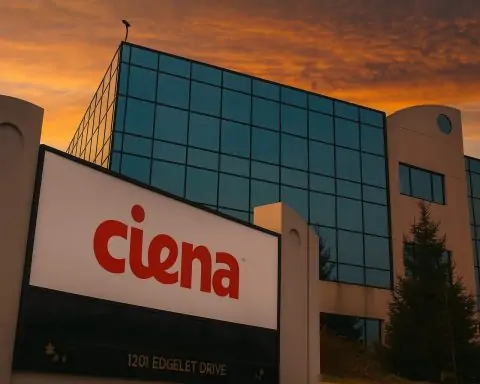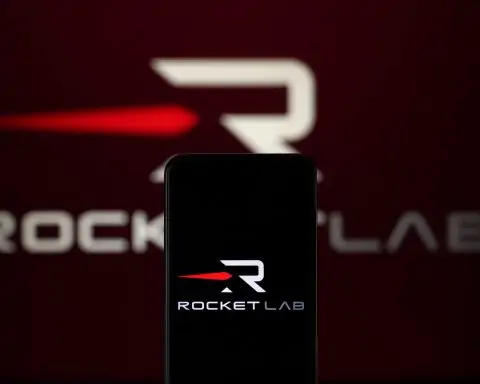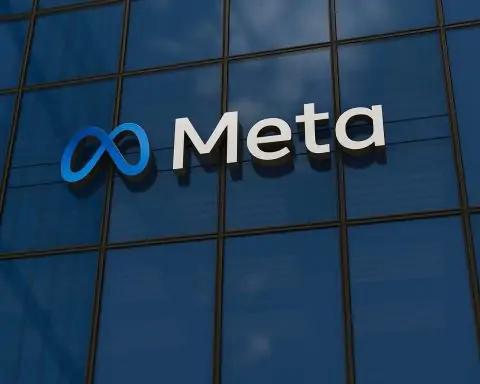- Price & Recent Moves: On Oct. 30, 2025, Critical Metals Corp (NASDAQ: CRML) trades around $13.54, up about 16.8% on the day [1]. Earlier in October the stock surged ~60–75% after U.S. media reported the Trump administration was eyeing a ~8% stake ($50M) in CRML to secure Greenland’s Tanbreez rare-earth deposit [2] [3]. Shares climbed from under $8 in late Sept. to a 52-week high of $21.45 by Oct. 13 [4]. Mid-month profit-taking on U.S.–China trade news then drove CRML down over 65% to lows near $11 [5], before it rebounded into late October.
- Projects: CRML’s flagship asset is the Tanbreez rare-earth project in southern Greenland, a 4.7-billion-tonne orebody rich in heavy rare earths (e.g. dysprosium, terbium) and gallium [6]. (Geologist Gregory Barnes calls Tanbreez “a game-changer for the rare earths supply chain in the West” [7].) CRML also owns the Wolfsberg Lithium Project in Austria – Europe’s first fully permitted lithium mine, aimed at supplying high-grade lithium for EU batteries [8]. These projects give CRML exposure to both the rare-earth and lithium booms.
- Recent News: Key catalysts include U.S. deal rumors and contracts. In early Oct, multiple outlets reported the U.S. may convert a $50M Defense Production Act grant into an ~8% equity stake in CRML to secure Tanbreez [9] [10]. Shortly after, on Oct. 6 CRML closed a $35 million PIPE financing with an institutional investor to fund Tanbreez development [11] [12] (CEO Tony Sage said this “validates the opportunities ahead for Tanbreez” [13]). CRML has also signed long-term offtake agreements: a 10-year deal to supply ~10,000 tpa of concentrate to U.S. processor Ucore Rare Metals (DoD-backed) and a 10-year LOI with REalloys Inc. covering 15% of Tanbreez output [14]. REalloys’ CEO Lipi Mainheim praised Tanbreez as “a remarkable opportunity… vital to the U.S. defense industrial base” [15]. In late September CRML agreed to raise its Tanbreez ownership to 92.5% (pending Greenland approval) [16].
- Analyst Sentiment: Experts are divided. Some technical analysts note broken resistance around $19–20 and see support near $17 [17], suggesting potential rallies toward $20 if momentum holds. But many caution that CRML’s valuation is extremely speculative (enterprise value >$1.6B vs. under $1M annual sales [18]) and the stock is very volatile (beta >1.1) [19]. Wall Street consensus is cautiously bearish: one data site shows a Sell consensus on CRML [20], and a lone analyst gives a 12-month target of $12.00 (about 30% below today’s price) [21]. Market analysts advise using stops or taking profits on rallies [22]. On the other hand, investment newsletters point out CRML’s strategic assets – e.g. $50M raised to finish a Bankable Feasibility Study – and note that short interest is extremely high (~25.5% of float) [23], which could fuel a squeeze.
- Market Reaction: Investor sentiment has swung wildly. Following the mid-October sell-off, rare-earth stocks rebounded late Oct. (MP Materials, USA Rare Earth and CRML all gained as trade fears eased). MarketBeat notes CRML dropped ~13.7% from Oct.24–27 on a rumored U.S.–China trade truce [24], but frames this as a likely overreaction given secured contracts and backing [25]. Today’s 16.8% gain reflects renewed optimism amid broader critical-minerals momentum.
Stock Performance and Price Movement
CRML’s chart over the past month has been extreme. In the week after U.S. stake rumors (Oct. 6–10) the stock vaulted from about $10 to ~$16.60 [26], then briefly spiked to an intraday high of $21.45 on Oct. 13 [27] [28]. Trading volumes surged (e.g. ~20 million shares on Oct. 13 [29]), underlining the volatility. Technical analysts at StocksToTrade noted CRML “traded as low as $10.20 and as high as $16.98 in just one week” [30]. After the mid-month profit-taking (CRML dropped more than 65% to about $11 by Oct. 23) [31], the stock stabilized near its 50-day moving average. On Oct. 30 CRML is trading around $13.5 [32], well above its late-Sept level but below the mid-month peak. Market analysts caution that such wild swings are likely to continue, given the speculative nature of the story [33].
Recent News & Company Developments
CRML has been in the headlines nearly every day. The biggest catalyst was the U.S. rare-earth gambit: on Oct. 6 Reuters reported that Trump administration officials were discussing taking an 8% stake in CRML (converting a $50M grant into equity) [34] [35]. This news alone sent CRML soaring (pre-market) and was cited by Benchmark Mineral Intelligence’s Neha Mukherjee as a move toward “a diversified ‘mine-to-magnet’ supply chain independent of China” [36]. The White House quickly noted the talks were preliminary, but the buzz lifted the stock to record highs.
Also on Oct. 6, CRML announced it closed a $35 million PIPE financing with a U.S. institutional investor [37]. The placement (5M shares plus 10M warrants) was aimed at funding feasibility and development of Tanbreez; CEO Tony Sage said it “validates the opportunities ahead for Tanbreez” and meets “the growing need for heavy rare earths in the West” [38].
In the following days CRML confirmed strategic offtake deals. In August it had signed a 10-year offtake LOI with Ucore Rare Metals (a DoD-backed processor) for ~10,000 tonnes per annum of Tanbreez output [39]. On Oct. 8, CRML announced a 10-year LOI with REalloys Inc. for up to 15% of Tanbreez concentrate [40]. Tony Sage called the REalloys deal “another key step into the U.S. market” toward “a resilient, fully independent supply chain” [41]. REalloys CEO Lipi Mainheim lauded Tanbreez for its rich heavy-REE content and said it “presents a remarkable opportunity… vital to the U.S. defense industrial base” [42]. (These off-takes build on earlier agreements, bringing about 25% of Tanbreez production under U.S. contract [43].)
Additional news in late October included CRML’s planned greenland stake increase: the company agreed to buy its joint-venture partner’s remaining interest to reach ~92.5% ownership of Tanbreez, pending government approval [44]. This would give CRML near-full control of the project.
Finally, U.S. policy updates loom large. Reuters and TechStock² report that the U.S. Export-Import Bank has signaled a $120 million loan for Tanbreez [45] – potentially covering most of the project’s ~$290M capex when combined with the $50M equity [46]. Such backing (if it materializes) adds bullish tailwinds.
Industry Context: Rare Earths & Critical Minerals
CRML’s run-up is part of a broader critical-minerals boom. Governments and investors worldwide are racing to secure supplies of lithium, rare earths and other battery/defense metals as China dominates most of this market. For example, China now controls roughly 85–90% of global rare-earth processing [47] and has recently tightened export curbs. U.S. and EU policymakers have invoked emergency powers (e.g. the Defense Production Act) and signed long-term supply contracts to break that dependency. Benchmark research notes the U.S. has even taken equity stakes in peers like Lithium Americas and MP Materials to diversify supply [48].
These trends underpin CRML’s appeal: Tanbreez is unusually rich in heavy rare-earth elements (dysprosium, terbium) used in EV motors, wind turbines and military systems [49], and also contains gallium and tantalum (critical semiconductor metals). Unlike many RE projects, Tanbreez’s ore includes these high-value co-elements, making it strategically attractive to Western technology and defense industries [50]. On the lithium side, CRML’s Wolfsberg project in Austria is positioned to feed Europe’s burgeoning EV battery sector [51]. (The EU currently imports most battery metals, so Wolfsberg’s output would be a rare domestic source.) In short, CRML sits at the intersection of EV/renewables demand, clean-tech policy, and national-security supply chains.
Economists and strategists note that such geopolitical shifts tend to be long-term: a MarketBeat analysis argues that onshoring critical minerals is “a multi-year, bipartisan national security imperative” that won’t be derailed by short-term trade skirmishes [52] [53]. This longer-term view – combined with CRML’s contracts and funding – leads some analysts to view the late-October pullback as a temporary “dip” rather than a change in fundamentals [54] [55].
Analyst Outlook & Forecasts
Analysts’ stock forecasts for CRML vary widely and remain unsettled. Stockanalysis.com reports a 12-month price target of $12.00 by one analyst (a “Strong Buy” recommendation), which actually implies downside from current levels [56]. Conversely, many observers warn that the stock is overvalued on fundamentals: CRML trades at an enterprise value of ~$1.6B despite roughly $0.5 million in annual sales [57]. Wall Street Zen cut its rating from “Hold” to “Sell,” and Weiss Ratings also maintains a sell grade [58], reflecting skepticism that the bullish scenario can play out perfectly. MarketBeat’s consensus table similarly shows a “Sell” consensus for CRML (with no price target) as of late Oct [59].
At the same time, some technical analysts remain optimistic on momentum: StocksToTrade’s technical call (cited by TS2) observed that CRML has broken above prior resistance (~$19–20) and may find support around $17 on pullbacks [60]. They note that if broader rare-earth sentiment holds, CRML could resume its uptrend, but advise using tight stop-losses. Benzinga analysis similarly highlights the broken resistance levels and bullish momentum. In one notable comment, Timothy Bohen (StocksToTrade) urges investors to have a clear plan and not chase the rally unchecked [61].
To summarize, forecasts range from moderately bullish (high targets above $20 if both Tanbreez and Wolfsberg advance smoothly) to cautious (price targets near or below $12 reflecting execution risks). Given the uncertainty, many analysts emphasize stock discipline: taking partial profits at resistance, and watching closely for the company to hit development milestones (drilling and permitting) before committing new capital.
Investor Sentiment and Market Reaction
Investor sentiment has been a roller-coaster. In late Oct., CRML joined other U.S. rare-earth miners in a steep sell-off on rumors of a U.S.–China trade truce. For example, Reuters reported on Oct. 27 that US-listed rare earth stocks slumped ahead of a possible deal to pause tariffs and export curbs [62]. CRML fell about 17.6% that day [63] (MarketBeat puts its drop at ~13.7% over Oct.24–27 [64]). Traders largely saw this as a short-term reaction – the underlying onshoring policy was still intact.
Indeed, many investors took the dip as a buying opportunity. By Oct. 28 CRML had bounced ~15% from its trough [65], as pessimism eased. A MarketBeat analysis headlined “Don’t Fear the Dip” argued that the pullback “looks overdone” – pointing out CRML’s secured $50M financing for its feasibility study and long-term contracts as fundamentals that should drive a rebound [66] [67]. High short interest (~25.5% of float [68]) means many investors were betting on further declines, so any positive news could trigger a short squeeze.
More broadly, institutional investors have shown intense interest: over 85% of CRML shares are held by institutions (versus ~15% retail) [69]. This may explain the huge volume spikes – institutional trading can push the stock rapidly up or down around news. Recent technical coverage noted CRML hit a new 52-week high (52.45 on Oct. 13) on volume of ~20 million shares [70]. Such data underscore how news-driven and sentiment-driven this stock has become.
In summary, the market reaction to CRML’s news has been extreme: big gains on every bullish headline and deep sell-offs on any hint of uncertainty. This pattern is likely to persist until CRML either de-risks its projects or until the macro narrative stabilizes. For now, the crowd appears split – some are excited by the “green gold rush” narrative, while others are wary. As one FXLeaders analyst put it, “CRML remains one of the most closely watched small-cap resource plays this quarter” [71], but its future will depend heavily on execution of its Greenland and Europe projects and the global policy climate for critical minerals.
Sources: Company filings and press releases; Reuters and Benzinga news reports [72] [73] [74] [75]; industry analysis (TechStock², MarketBeat, FXLeaders) [76] [77] [78] [79]; stock data from Reuters [80] and market analytics sites [81]. All information is current as of Oct. 30, 2025.
References
1. www.reuters.com, 2. ts2.tech, 3. www.reuters.com, 4. ts2.tech, 5. www.fxleaders.com, 6. ts2.tech, 7. ts2.tech, 8. ts2.tech, 9. ts2.tech, 10. www.reuters.com, 11. ts2.tech, 12. ts2.tech, 13. ts2.tech, 14. ts2.tech, 15. ts2.tech, 16. ts2.tech, 17. ts2.tech, 18. ts2.tech, 19. ts2.tech, 20. ts2.tech, 21. stockanalysis.com, 22. ts2.tech, 23. www.marketbeat.com, 24. www.barchart.com, 25. www.barchart.com, 26. ts2.tech, 27. ts2.tech, 28. ts2.tech, 29. ts2.tech, 30. ts2.tech, 31. www.fxleaders.com, 32. www.reuters.com, 33. ts2.tech, 34. ts2.tech, 35. ts2.tech, 36. www.reuters.com, 37. ts2.tech, 38. ts2.tech, 39. ts2.tech, 40. ts2.tech, 41. ts2.tech, 42. ts2.tech, 43. ts2.tech, 44. ts2.tech, 45. ts2.tech, 46. ts2.tech, 47. ts2.tech, 48. www.reuters.com, 49. ts2.tech, 50. ts2.tech, 51. ts2.tech, 52. www.marketbeat.com, 53. www.barchart.com, 54. www.barchart.com, 55. www.marketbeat.com, 56. stockanalysis.com, 57. ts2.tech, 58. ts2.tech, 59. www.marketbeat.com, 60. ts2.tech, 61. ts2.tech, 62. www.reuters.com, 63. www.reuters.com, 64. www.barchart.com, 65. www.marketbeat.com, 66. www.barchart.com, 67. www.marketbeat.com, 68. www.marketbeat.com, 69. ts2.tech, 70. ts2.tech, 71. www.fxleaders.com, 72. www.reuters.com, 73. www.reuters.com, 74. www.marketbeat.com, 75. www.fxleaders.com, 76. ts2.tech, 77. ts2.tech, 78. ts2.tech, 79. www.barchart.com, 80. www.reuters.com, 81. stockanalysis.com







